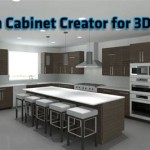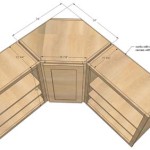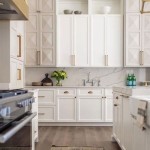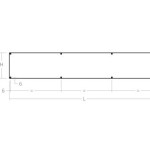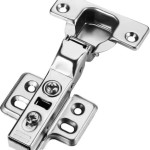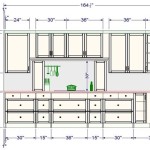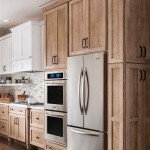Molding For Kitchen Cabinets: Functionality And Decor in One
Kitchen cabinets are a focal point of any kitchen, and the right molding can enhance their functionality and aesthetic appeal. Molding creates a finished look, conceals gaps, and adds character to your kitchen design. Here are some essential aspects of molding for kitchen cabinets to consider:
Types of Molding
There are various types of molding available for kitchen cabinets, each with its unique style and purpose. Crown molding is installed at the top of cabinets to create a decorative transition to the ceiling. Base molding, on the other hand, covers the gap between the cabinet and floor, providing a seamless look and preventing dirt accumulation. Door and drawer molding add character and framing to the fronts of cabinets, enhancing their overall design.
Materials
Molding for kitchen cabinets can be made from different materials, such as wood, PVC, and MDF. Wood molding offers a classic and durable option, available in various species and finishes. PVC molding is moisture-resistant, making it suitable for areas prone to moisture, such as near sinks or dishwashers. MDF molding is a budget-friendly option that can be painted or stained to match the cabinets.
Style
The style of molding should complement the overall design of your kitchen. Traditional kitchens may opt for ornate molding with curves and intricate details, while modern kitchens often favor simpler and more streamlined profiles. Shaker-style kitchens feature clean lines and minimal molding, creating a timeless and functional aesthetic.
Functionality
Beyond aesthetics, molding plays a crucial role in functionality. Crown molding helps conceal any gaps between cabinets and the ceiling, preventing dust and debris from accumulating. Base molding covers the gap between the cabinet and floor, protecting the cabinet from moisture and making cleaning easier. Door and drawer molding provide a secure and precise fit for cabinet doors and drawers, ensuring smooth operation.
Installation
Installing molding requires precision and attention to detail. Proper measurement and cutting are essential to ensure a seamless fit. Cabinet molding is typically attached using nails, screws, or adhesive. If you're not comfortable with DIY installation, it's advisable to hire a professional cabinet installer to ensure a flawless finish.

3 Ways To Enhance Your Kitchen With Crown Molding

Adding Crown Molding To Cabinets Young House Love

11 Kitchen Cabinet Crown Molding Ideas For Your

Crown Moulding The Recently Rediscovered Kitchen Solution

Crown Molding For Shaker Kitchen Cabinets

Diy Kitchen Cabinet Upgrade With Paint And Crown Molding

Adding Moldings To Your Kitchen Cabinets Remodelando La Casa

Decorative Molding Timberlake Cabinetry

7 Types Of Cabinet Moldings And How To Use Them Properly

Crown Molding For Kitchen Cabinets Fine Homebuilding
Related Posts

